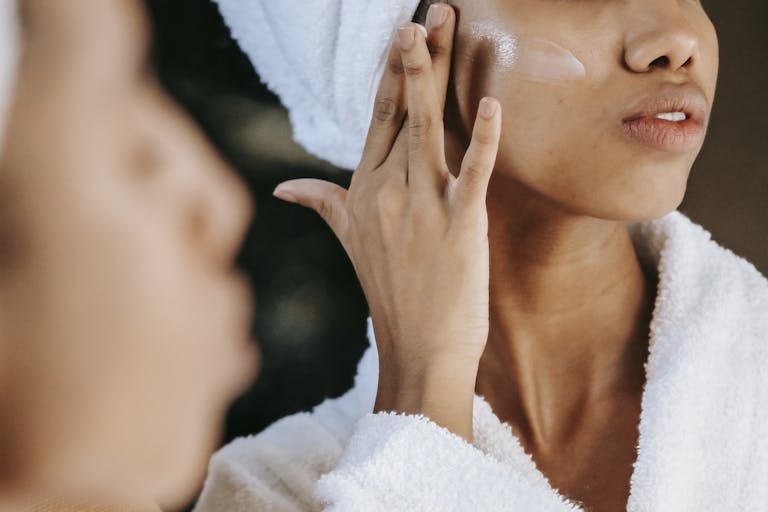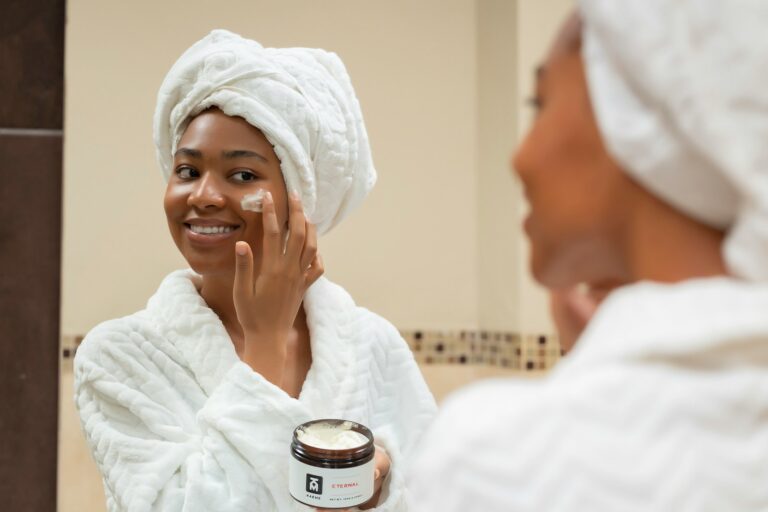Over time, many people develop habits that can compromise their skincare routine, especially when it comes to washing your face. You might be unknowingly making common mistakes that could lead to breakouts or irritation. This post will identify these pitfalls and guide you on how to cleanse your skin effectively. By avoiding these errors, you can achieve a clearer complexion and enhance the overall health of your skin.
The Consequences of Poor Facial Hygiene
Long-Term Skin Damage
Failing to maintain proper facial hygiene can lead to long-term skin damage that may take time and effort to reverse. For instance, neglecting to cleanse adequately can result in the buildup of dead skin cells, which clogs pores and leads to a dull complexion. Over time, this buildup may accentuate fine lines and wrinkles, ultimately affecting your skin’s elasticity and youthfulness. Additionally, accumulated dirt and oil can contribute to conditions such as hyperpigmentation, where certain areas of your skin become significantly darker than others, distorting your overall skin tone.
Moreover, the long-term effects can extend beyond superficial appearance. Poor hygiene can weaken your skin’s natural barrier, making it more susceptible to environmental stressors such as pollution and ultraviolet (UV) radiation. The cumulative effect of these stressors could further accelerate aging and splurge skin issues, demanding more intensive treatment down the line.
Short-Term Effects and Breakouts
In the short term, neglecting your facial hygiene leads to noticeable consequences, primarily in the form of breakouts and inflammation. Skipping out on cleansing can result in excess oil production, which is a key contributor to acne. Dirty skin cannot effectively regulate its oil levels, creating an ideal environment for bacteria to thrive. Studies show that over 80% of individuals suffering from acne experienced a marked improvement after adopting a consistent skincare regimen focused on cleaning and exfoliating.
Breakouts manifest as pimples, blackheads, or cystic lesions that not only mar your complexion but often require extensive treatment to resolve. Picking or touching your face under these circumstances can exacerbate the problem, leading to even more pronounced inflammation and potential scarring. The cycle of poor hygiene followed by sudden breakouts can diminish your confidence, particularly if you rely on quick fixes instead of foundational care.
Additionally, you may experience redness and irritation that stem from inflammatory responses triggered by clogged pores. The more you skip cleansing, the more your skin can become accustomed to this unkempt state, which complicates the issue even further. Addressing these short-term issues early on can save you from investing in extensive treatments or products designed to combat deep-rooted problems caused by a lack of hygiene.
The Essential Ingredients for Effective Cleansing
Understanding Surfactants and Their Role
Surfactants are the unsung heroes of facial cleansers, acting as the molecules that break down oil and dirt on your skin. This ingredient allows the cleanser to effectively lift away impurities, making them easier to rinse off. Without surfactants, your cleansing routine would imperatively be washing your face with just water, unable to remove the grime and excess sebum that can clog pores. Look for surfactants such as sodium lauryl sulfate or cocamidopropyl betaine in the ingredient list; both are effective but vary in their gentleness on the skin. You want to strike a balance—enough to cleanse thoroughly but gentle enough to avoid irritation.
While chemical surfactants are common, natural alternatives like coconut-derived surfactants can also be effective. These tend to be milder on the skin, reducing the chances of over-drying or redness, particularly for sensitive skin types. When choosing a cleanser, examining the type and concentration of surfactants can help you avoid formulas that may be overly harsh or ineffective for your skin type.
The Importance of pH Balance in Cleansers
pH balance is an often-overlooked factor in determining the effectiveness of a facial cleanser. Your skin has a natural pH level between 4.5 and 5.5, making it slightly acidic. Opting for cleansers that fall within this range supports your skin’s natural barrier, maintaining the balance imperative for fighting off bacteria and retaining moisture. Using a product that is too alkaline can disrupt this balance, leading to issues such as dryness, irritation, or even increased oiliness as your skin compensates.
A cleanser with a pH level significantly higher than your skin’s natural acidity could potentially strip away imperative oils, causing long-term damage and discomfort. For this reason, choose a cleanser specifically formulated to be pH-balanced and tailored to your skin type. When in doubt, formulations labeled as “gentle” or “balanced” often meet this requirement, helping you maintain your skin’s resilience and health.
The Skincare Ritual: Timing and Frequency Matters
The Optimal Times to Wash Your Face
Washing your face at the right times can significantly impact your skin’s health. Start your day by cleansing your face in the morning to remove oils and impurities that accumulate overnight, setting a fresh canvas for your skincare routine. In the evening, another cleanse is vital—this step helps to strip away makeup, sunscreen, and dirt that have built up throughout the day. Skipping this evening cleanse can lead to clogged pores and breakouts, as your skin needs to breathe and rejuvenate overnight.
Consider your lifestyle as well. If you exercise during the day or tend to sweat more, a third wash might be necessary post-workout to prevent sweat and grime from lingering on your skin. This extra step helps to keep your complexion clear and healthy, especially if you’re prone to acne or skin irritation.
How Often Should You Cleanse?
The general guideline suggests cleansing your face twice a day for optimal skin health. However, your skin type can dictate a different approach. Oily skin types may benefit from this twice-daily routine, as it helps control excess sebum and reduces breakouts. On the contrary, those with dry or sensitive skin might find that washing once a day is adequate, as over-cleansing can strip crucial moisture and lead to irritation.
Customization based on your skin’s needs is key. You might experiment with various frequencies to see what works best for you. For example, you could start with twice daily washes and, if you notice your skin feeling tight or dry, scale back to once a day. Always listen to your skin—its reactions will guide you in determining the proper cleansing frequency. Keeping a consistent routine tailored to your skin type not only helps maintain balance but can also enhance the effectiveness of your other skincare products.
The Power of Technique: How to Properly Wash Your Face
The Right Motion: Circular vs. Upward Strokes
Employing the correct motion while washing your face can dramatically enhance your skin’s cleanliness and radiance. Using circular motions helps to dislodge impurities from the pores effectively, facilitating a deeper cleanse. As you gently massage your skin in circular motions, you stimulate circulation, which can help bring more oxygen and nutrients to the surface, enhancing your natural glow. The approach should be gentle; think of it as giving your skin a soothing massage rather than a vigorous scrub.
On the other hand, utilizing upward strokes can be especially beneficial for preventing sagging over time. Your skin’s natural elasticity can diminish with age, thus encouraging the skin to be pulled up while washing can promote tighter, firmer skin. Combining these techniques can provide dual benefits—deep cleaning via the circular method, while also enhancing skin firmness with upward strokes.
The Importance of Water Temperature
The temperature of the water you use to wash your face can significantly affect your skin’s health. Water that is too hot can strip your skin of necessary oils, leaving it dry and irritated. Aim for lukewarm water instead, which helps to open up your pores and effectively remove dirt and makeup without causing irritation. You want to find a balance; excessively cold water may not cleanse effectively as it can constrict pores, trapping impurities.
Using lukewarm water not only assists in effectively cleansing the skin but also prepares it for subsequent skincare treatments, allowing products to penetrate better. After cleansing, a splash of cool water can be beneficial; it helps to close your pores back up, locking in moisture and leaving your skin feeling refreshed. Striking the right balance with water temperature contributes significantly to the overall effectiveness of your cleansing routine.
| Too Hot | Strips necessary oils, leading to dryness and irritation |
| Lukewarm | Opens pores for effective cleaning while maintaining moisture |
| Too Cold | May not cleanse effectively, can cause pores to constrict |
Finding that perfect lukewarm temperature could be the golden ticket to a successful skincare routine. Your skin naturally functions better at a stable, moderate temperature, which means it can maintain its barrier and hydration levels without interruption. A thorough understanding of water temperature and its effects on your skin allows for a tailored cleansing routine that’s both gentle and effective, setting the foundation for a healthy skincare regimen.
| Benefit of Optimal Temperature | Enhances cleansing without stripping moisture |
| Negative Effects of Extreme Temperatures | Causes sensitivity, dryness, and irritation |
Avoiding Common Mistakes in Facial Cleansing
Over-Cleansing and Its Effects
Over-cleansing your face can lead to skin that feels tight, dry, and irritated. When you cleanse too frequently, you strip your skin’s natural oils, disrupting its delicate balance. This may result in your skin producing even more oil to compensate, causing a vicious cycle of oiliness and breakouts. Studies have shown that individuals who wash their faces more than twice a day often experience increased acne and sensitivity, making proper frequency necessary in your skincare regimen.
Stripping your skin of necessary moisture not only affects its surface but can also lead to long-term issues, such as premature aging or inflammatory skin conditions like dermatitis. You might think you’re taking care of your skin by scrubbing away impurities, but the result could be a compromised skin barrier, leaving your face vulnerable to external irritants and pollutants. Find the sweet spot that caters to your skin type rather than following a one-size-fits-all approach.
Neglecting Essential Areas
While washing your face, it’s easy to overlook wrinkles around the mouth or the area beneath the eyes, which can lead to buildup of dirt and oil over time. These often-forgotten spots not only affect how clean your face feels but can also lead to undesired blemishes. You want every section of your face to be thoroughly cleansed for a balanced complexion, so pay attention to these crucial areas during your routine.
Failing to thoroughly clean your hairline, the sides of your nose, and behind your ears can create an environment for clogged pores. Specifically, areas like the chin and around the jawline are particularly prone to acne due to excess oil and trapped dirt. A comprehensive cleanse ensures you remove both surface-level impurities and deeper residues, allowing your skin to breathe properly and maintain a healthy glow. Make a conscious effort to include these often-ignored zones in your daily wash to achieve the best results for your skin.
Tailoring Your Skincare Routine to Your Skin Type
Identifying Your Skin Type
Understanding your skin type is fundamental to creating an effective skincare routine. Typically, skin can be classified into five categories: *normal*, *oily*, *dry*, *combination*, and *sensitive*. To identify your skin type, observe how your skin feels after cleansing. If it’s tight and flaky, you likely have dry skin. Oily skin may feel greasy, especially on the forehead, nose, and chin. If your skin feels comfortable but exhibits shine in the T-zone, you may have combination skin. For sensitive skin, reactions such as redness, burning, or itchiness are common after using certain products. You can even conduct a simple test by washing your face and leaving it bare for a few hours; what it reveals about your skin’s natural condition can be very telling.
It might help to consult a dermatologist who can analyze your skin further. They can provide insights into specific concerns such as acne or rosacea, aiding in a more tailored routine. Keeping a skincare journal can also be beneficial—note how your skin reacts to different products, weather changes, and dietary factors to get a better idea of its needs over time.
Choosing the Right Products for Different Needs
Selecting the right products based on your skin type can dramatically impact its health and appearance. For example, individuals with oily skin might opt for gel-based cleansers containing salicylic acid, which can help control excess oil and reduce breakouts. Conversely, those with dry skin should seek out creamier formulas infused with hydrating ingredients like hyaluronic acid or glycerin. For sensitive skin types, fragrance-free and hypoallergenic products are often the best options to minimize irritation.
Additionally, consider your skin’s needs at different times. In the summer months, you may want to switch to lightweight, non-comedogenic products to avoid clogging pores, while in winter, heavier creams and oils can provide the moisture barrier your skin craves. Keep those product labels in mind as well; a product that works wonders for one skin type could be a disaster for another. Always do a patch test to ensure compatibility before fully incorporating a new product into your routine.
Beyond Cleansing: The Role of Exfoliation and Moisturizing
Understanding When and How to Exfoliate
Exfoliating your skin encourages the removal of dead skin cells, which can result in a brighter, smoother complexion. Aim to exfoliate your face 1-3 times a week, depending on your skin type. If you have sensitive skin, start with a gentle chemical exfoliant, like alpha-hydroxy acids (AHAs) or beta-hydroxy acids (BHAs), which can provide effective results without the harsh scrubbing associated with physical exfoliants. On the other hand, if your skin is oilier or more resilient, you might incorporate a physical exfoliant containing fine granules to slough away surface debris. Watch for signs of irritation—if your skin becomes red or inflamed, dial back on frequency or switch to a gentler method.
The application method plays a role too. Use a soft cloth or your fingertips to apply exfoliant, and focus on areas prone to roughness or congestion, such as the forehead and nose. Take your time, spending around 30 seconds on this step. Don’t forget to follow with ample hydration by applying a moisturizer afterward, as exfoliating can leave your skin feeling temporarily exposed and more vulnerable.
The Necessity of Moisturizing After Cleansing
Cleansing your face strips away dirt, oil, and impurities, but it can also remove your skin’s natural moisture barrier. This makes it imperative to follow up with a quality moisturizer. Choosing a product suited to your skin type enhances skin hydration and helps seal in moisture. For oily skin, lightweight gel-based moisturizers are effective, whereas drier skin types benefit from creamier, richer formulations loaded with ingredients like hyaluronic acid or glycerin that attract and retain water.
Moisturizing directly after cleansing mitigates dryness that can result from both washing and exfoliating. The right moisturizer will not only replenish lost hydration but also support your skin’s barrier, which is your first line of defense against environmental aggressors. Applying moisturizer when your skin is still slightly damp helps to lock in moisture, leading to a more plump and healthy complexion. Make it a non-negotiable part of your skincare routine to ensure enduring skin health and vibrancy.
Expert Insights and Gentle Reminders
Recommendations from Dermatologists
Dermatologists emphasize the significance of choosing the right cleanser based on your skin type. For oily skin, a gel-based or foaming cleanser may efficiently remove excess sebum and prevent breakouts. In contrast, those with dry or sensitive skin should opt for hydrating creams or milks that nourish and hydrate without stripping natural oils. Additionally, experts recommend avoiding products with harsh sulfates or fragrances, as these can irritate the skin and lead to more issues down the line. Using lukewarm water rather than hot ensures that your skin’s natural barrier remains intact while effectively cleansing.
Frequency also plays a pivotal role in your skincare routine. Most dermatologists recommend washing your face twice daily, once in the morning and once before bed, to keep your skin clear and free from dirt and makeup. However, if you’ve had an intense workout or found yourself exposed to pollution throughout the day, feel free to wash your face more frequently. Just be sure to follow up with a good moisturizer to replenish your skin afterward.
The Importance of Listening to Your Skin
Paying attention to your skin’s response after cleansing can guide you towards a better routine. If you notice tightness, irritation, or excessive oiliness, it may be time to reassess your products and methods. Skin can often be a reflection of your overall health, and changes in your environment or diet can lead to alterations in your skin’s behavior. Trusting your instincts will help you tailor your skincare approach effectively.
Identifying patterns in your skin is vital. For instance, if your skin becomes dry each winter, you might want to incorporate richer moisturizers or change your face wash to a gentler formula. Alternatively, if breakouts become more frequent after a particular product introduction, eliminating that product might be beneficial. By tuning in to what your skin is telling you, you can make informed decisions that lead to healthier, more vibrant skin.
To Wrap Up
To wrap up, washing your face may seem like a simple task, but understanding the right techniques and avoiding common mistakes can significantly enhance your skin health. You should always tailor your cleansing routine to your skin type, ensuring that the products you choose do not strip away vital oils or irritate your skin. Additionally, being gentle while cleansing is vital; harsh scrubbing or using abrasive tools can do more harm than good.
Moreover, don’t overlook the importance of proper timing and temperature when washing your face. Using lukewarm water and allowing enough time for the cleanser to work effectively will yield the best results. By being mindful of these details and consistently applying these best practices, you can achieve cleaner, healthier skin that radiates vitality. Prioritizing a thoughtful approach to your cleansing routine will help you avoid common pitfalls and promote a complexion you can feel confident about.







